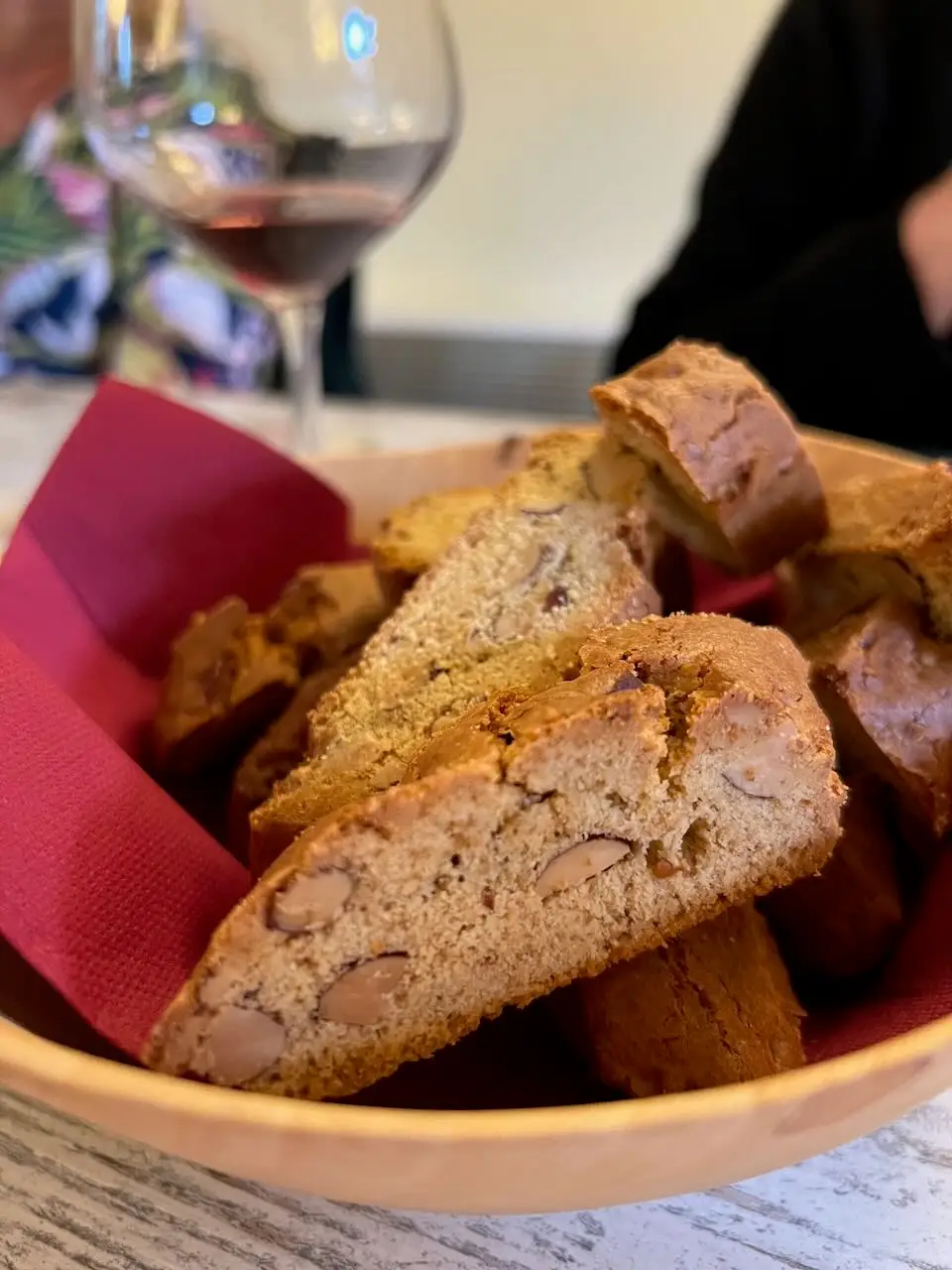There we were, four long time girlfriends, taking cooking lessons in Italy… Val d’Orcia to be specific. We were lucky enough to have found Tuscan Women Cook (#TuscanWomenCook)and had booked a week and we found ourselves at Mulina Val d’Orcia which is an Agriturismo (Renting rooms and providing meals), Organic Farm, Artisan Pasta Factory, Restaurant and last but not least a stop on the Tuscan Women Cook’s itinerary! The pictures below show the facility and location of this obviously very old estate. (which was fascinating!)
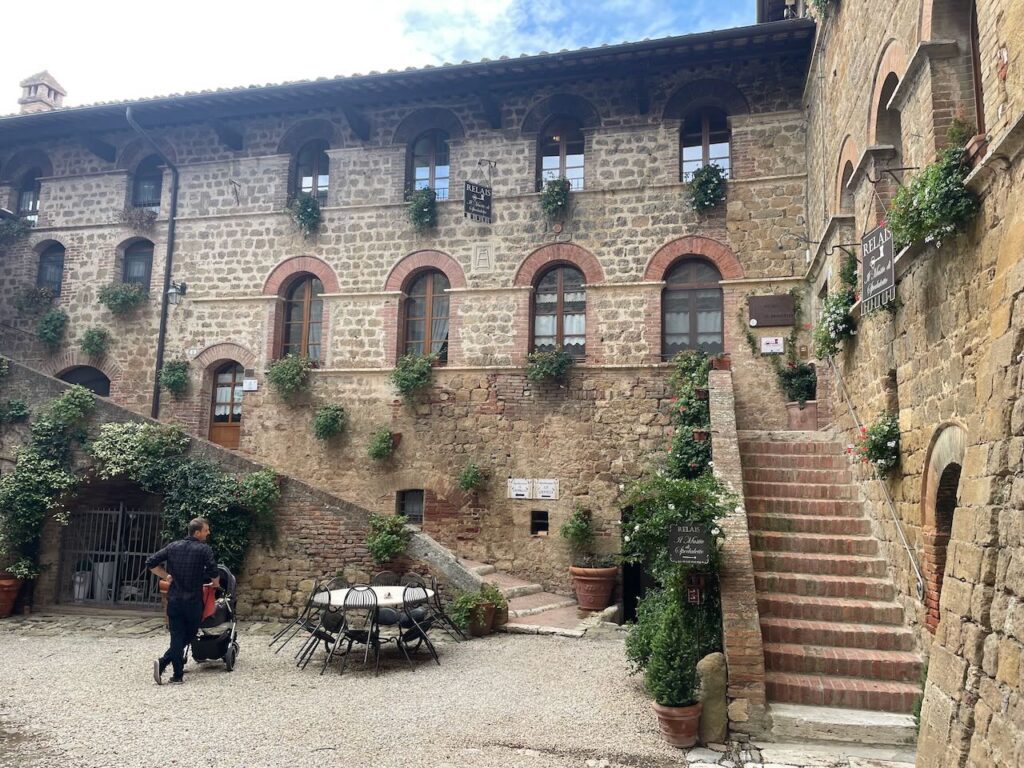


While there we learned about their values in growing grain, the methods and processes used to grind and separate the grains into various flours and then produce dried pasta and other flours and grains and ingredients. They grow both hard wheat and soft wheat and then grind that wheat into differing consistencies of fineness. Hard wheat has more gluten, so we use that in bread making and pasta – where the gluten structure is needed to support shapes and raising. Soft wheat will be milled in varying fineness then used for cakes and cookies and other (lighter) pastry applications. It was a fascinating discussion and it was fun to learn about wheat and its use and applications in Italy.
More and more I grow weary of our super refined flours in the US – and some day, I’m really going to do it — buy some organic wheat and grind it myself and bake bread with real true blue 100% wheat. This way we will digest the fibre and the protein of the natural grain – as they are doing every day at this organic artisan mill, restaurant and in essence, hotel.
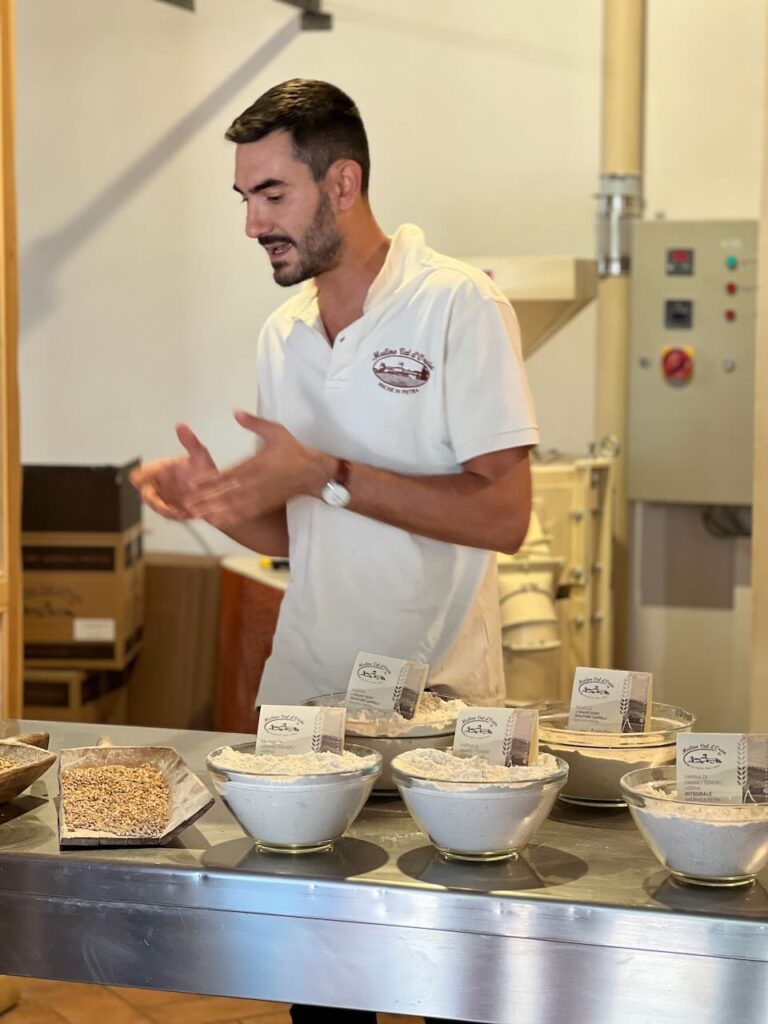
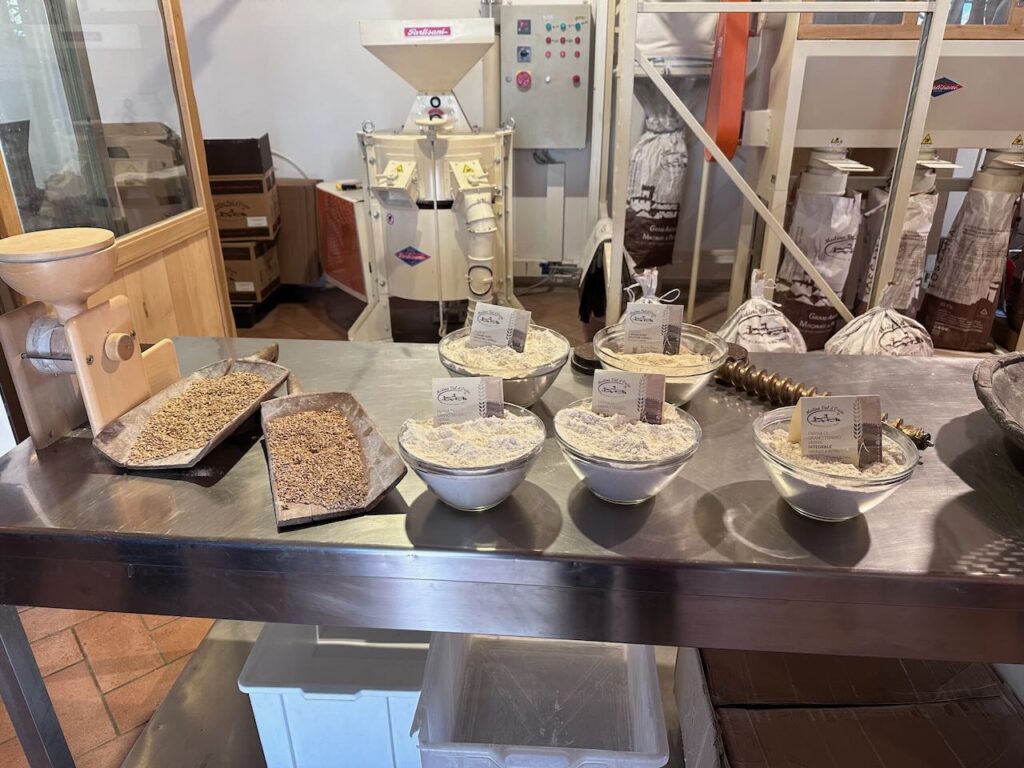
Cookies vs. Biscotti
One of the recipes we were taught while visiting Mulina Val d’Orcia, was the traditional Tuscan Almond Cookie – Cantucci. To us American’s we know this ‘cookie’ as Almond Biscotti. However, the Italians do not call it that. The word cantucci is used by Italians when referring to the cookie Americans call biscotti. Also, it’s my understanding that Italians often eat these cookies at the end of a meal, typically dinner, with a sweet wine. Compared to us American’s, who think of these cookies as a breakfast bite and coffee companion. And, if that weren’t enough to confuse us, apparently there can also be quite the discussion as to whether or not “real” biscotti include butter in the recipe, or not.
Wow – so much to learn and understand about Italian culture, food and language. But one thing you don’t need to question – is the deliciousness of these Almond Biscotti!
This recipe includes Butter, and a lot of it…
This recipe was given to us by an Italian Nonna, living and working in Val d’Orcia – and it includes butter. A lot of it. One of my traveling companions is Italian, she showed the recipe to her mother, and her mother was surprised that there was butter in the recipe – saying this isn’t traditional… As I prepared for this post, and read about the traditional biscotti – I saw many recipes that didn’t include butter. I saw a few that did, including a master class… My advice is to try this one. I think you’ll like it. We definitely did.
I sent a bunch of the biscotti out into the neighborhood – so that there wouldn’t be too much left in our house. No one needs to be eating these things day-in and day-out! I left what I thought was “too many” in the house and when I went to grab a few for one last picture – they were nearly gone! Wowzers. Not good for our waste lines. God knows I came back from Italy a few pounds heavier than when I left! I’m going to let the hubster eat the rest. Maybe. Ha.
Salt / Vanilla and/or Almond Flavoring and Baking Powder
This recipe does not specifically call for salt – nor does it include flavoring (vanilla or almond). However, it includes a specific Italian package of leavening that also includes vanilla flavoring. Since I wanted the authentic experience (and the packages were small) I picked up a few packages of the leavening they used and brought them home with me. Lucky for us all – it’s a fairly popular item and you can also find it on Amazon and at Italian grocery stores. One package is needed per batch.
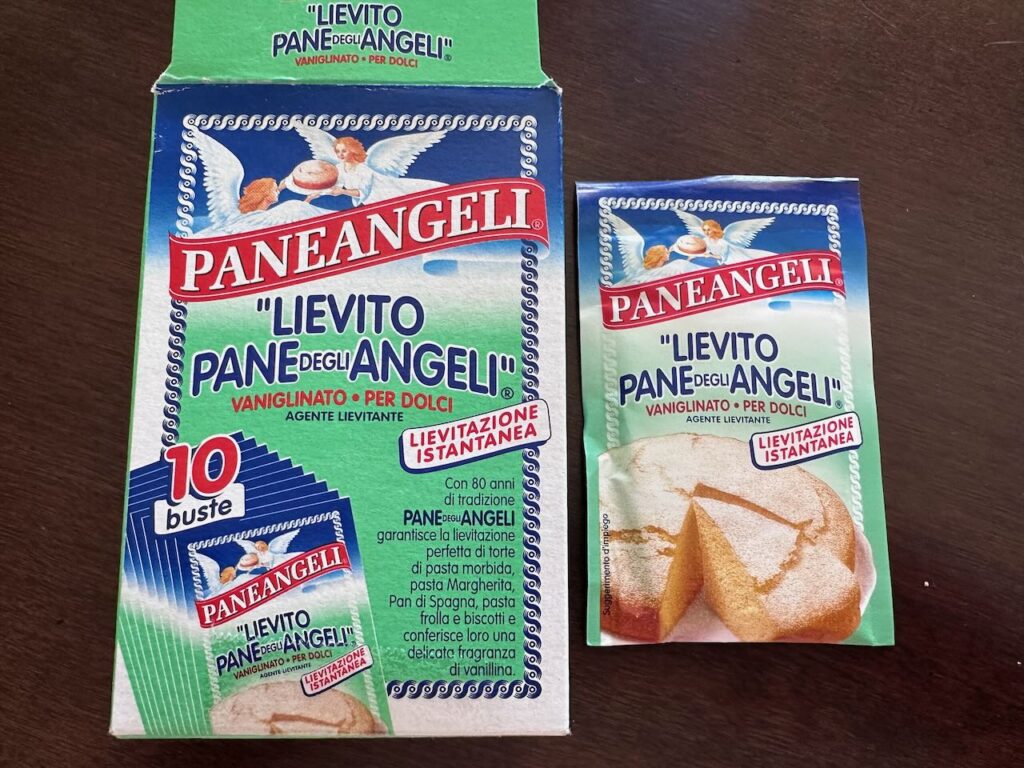
Some of the recipes I read included salt – you could add a half teaspoon or so, if you like (the recipe is 4 C of flour). You could also add a teaspoon of almond flavoring if you have it. If you are not using the vanilla packets above – substitute out 1 Tbl of baking powder + 1 tsp vanilla flavoring.
We had such a great time learning all the Tuscan Recipes!
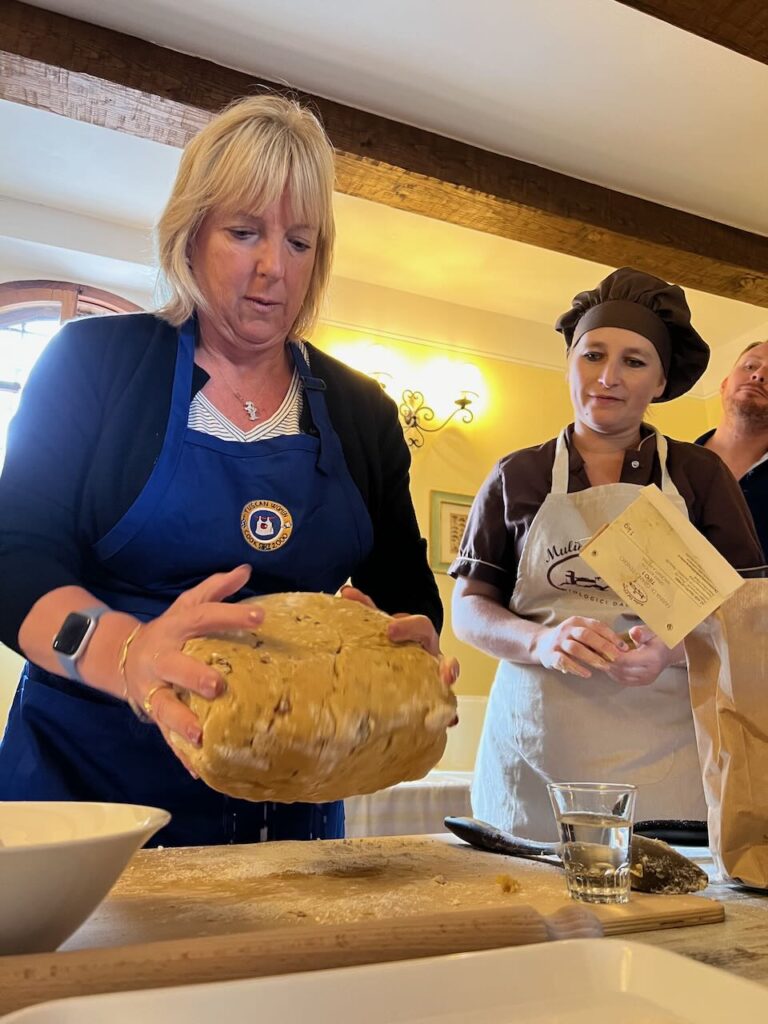
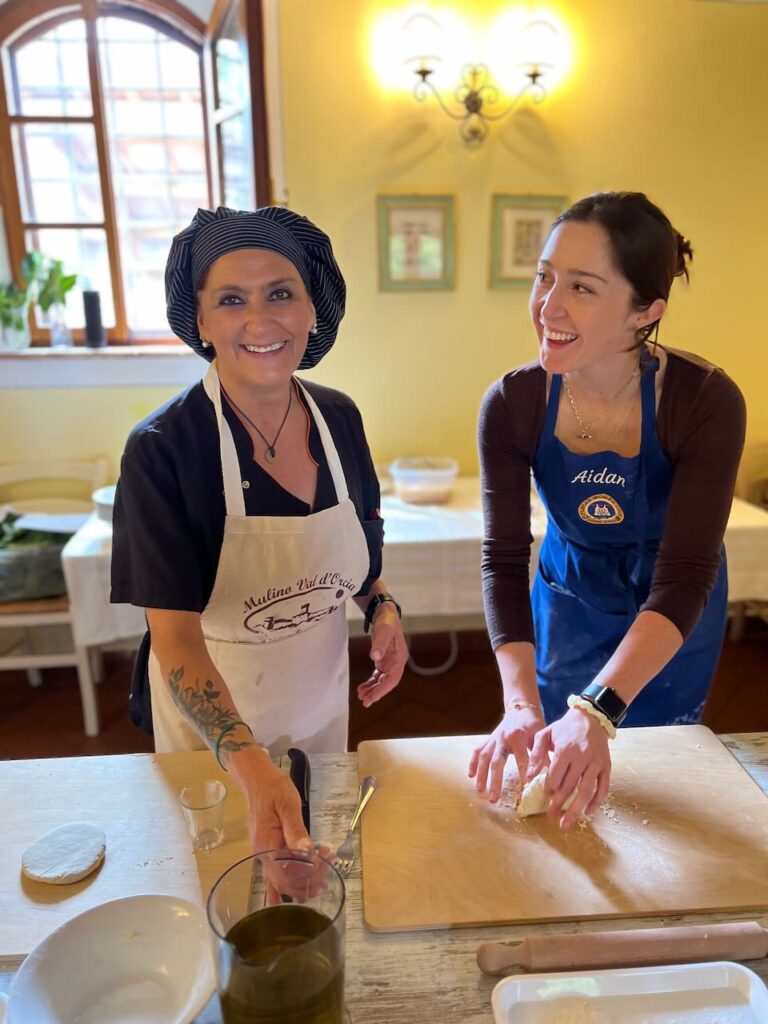
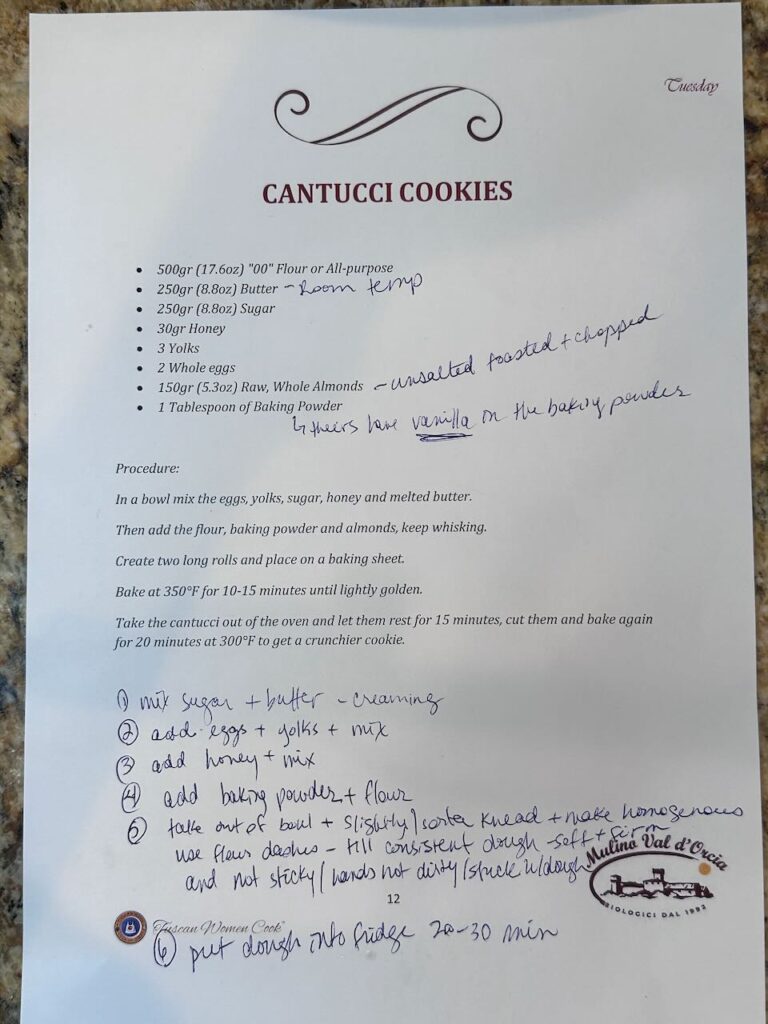
Ok – ready to sample and bake these up ? Get ready to share the bounty with your friends and family !
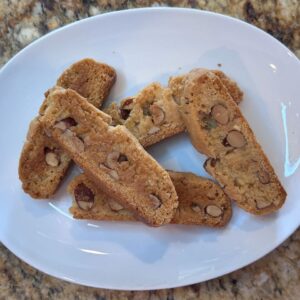
Cantucci Cookies – Tuscan Almond Biscotti
Equipment
- Mixer or Handheld Beaters
- Baking Sheets
Ingredients
- 500 g "00" Flour or All Purpose ~ roughly 4C of flour or 17.6 oz
- 250 g Butter Room Temp ~ 1 C (2 Sticks) or 8.8 oz
- 250 g Sugar ~1 ¼ C Sugar or 8.8 oz
- 30 g Honey ~1.5 TBL
- 3 Egg Yolks Room Temp
- 2 Eggs Room Temp
- 150 g Raw, Whole Almonds ~1 heaping C, unsalted, toasted and rough chopped
- 1 Tbl baking powder OR Italian PANEANGELI LIEVITO (SEE PIC)
- 1 tsp Almond Flavor —not included in original recipe!
- ½ tsp Salt —not included in original recipe!
Instructions
- Get all your ingredients ready.
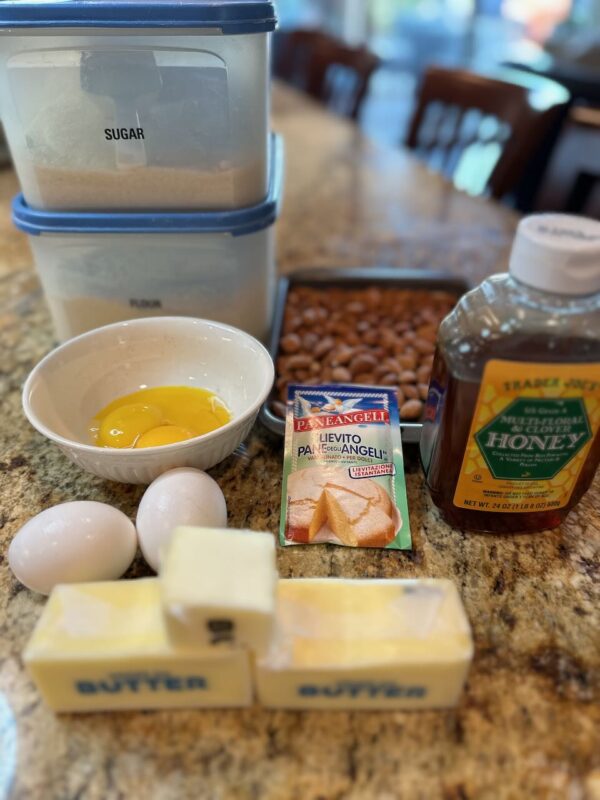
- Prepare the Almonds by roasting them in the oven at 350℉ for about 25-30 minutes. Check on them and toss on the pan every 10 minutes. Roughly chop the almonds (once cool) and set aside.
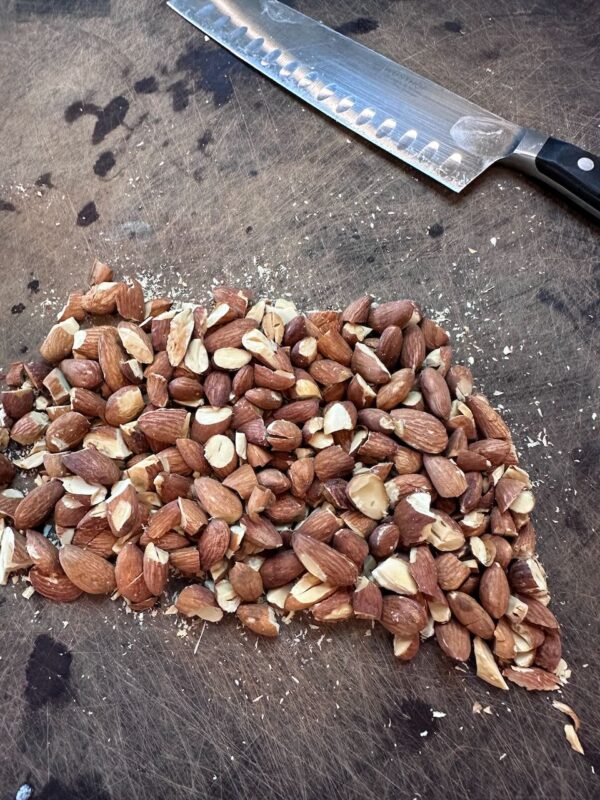
- In your mixer, or using a handheld, cream together the room temp butter and sugar. Once the mixture is 'whippy' (nearly doubled in volume and light colored) you should be done.
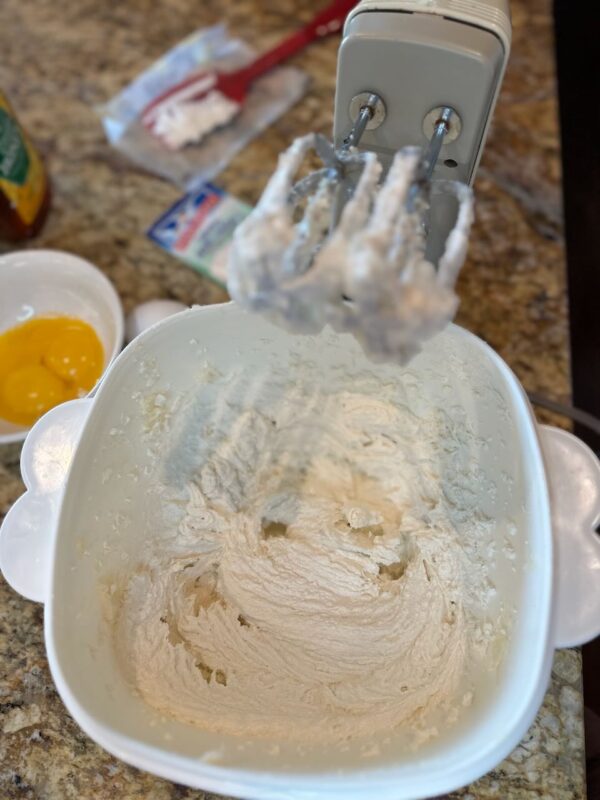
- Add the egg yolks, and eggs, mixing after each yolk or egg addition. Scraping down the bowl.
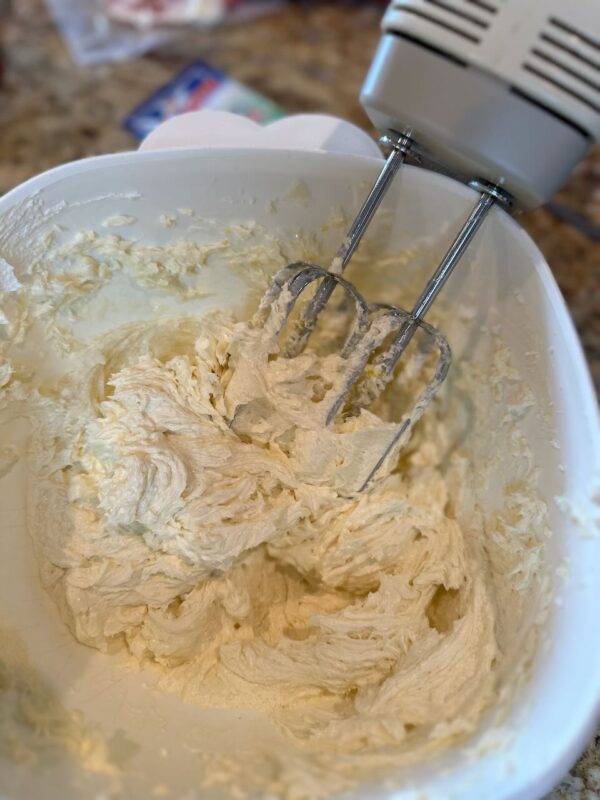
- Add the honey and mix.
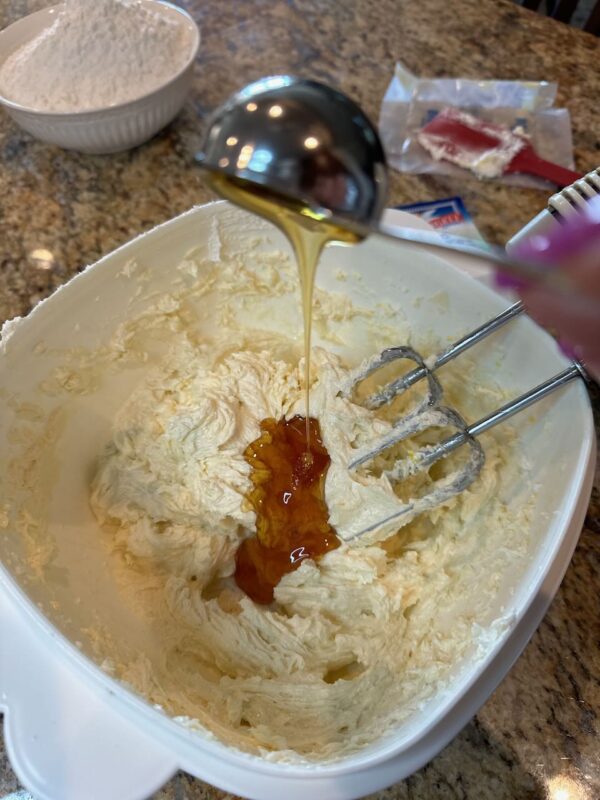
- Whisk the flour and the baking powder (Lievito) together. Add the flour to the butter / sugar mixture in several additions. Mix till just combined.
- Add the almonds and fold in using a spatula.
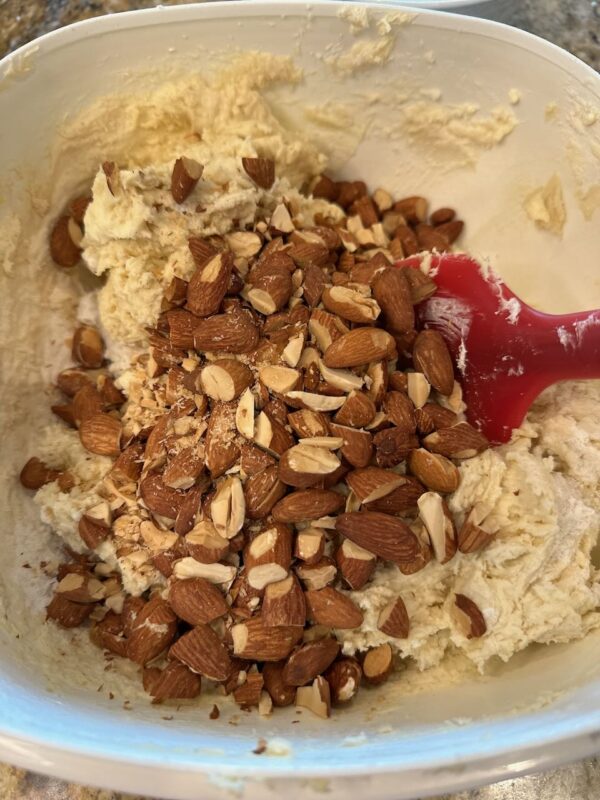
- Lightly dust your counter and dump the mixture onto the counter. Knead the dough ever so slightly together making sure it is uniform. The dough should be soft and yet a bit firm. (!?). The dough should not be sticky and your hands should not be dirty. If so – add a slight dusting of flour and integrate to the dough by lightly folding / kneading. If you depress the dough it should hold it's depression
- Separate the dough into two pieces. Form a small log and then roll the log longer and thinner using your palms and a back and forth rolling motion. Place two logs onto a cookie sheet and refrigerate for 30 minutes. Do not make the logs too thick else they won't bake evenly.
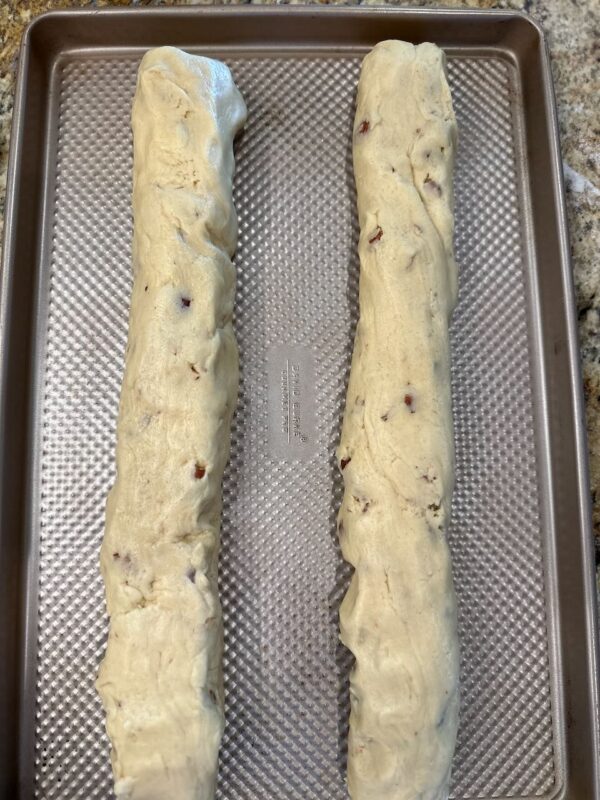
- Preheat your oven to 350℉ while the biscotti is in the fridge.
- Bake the biscotti for 25-35 minutes. The biscotti should be lightly golden when finished baking. (Mine needed a few more minutes.) Check on them near the end of the baking time.
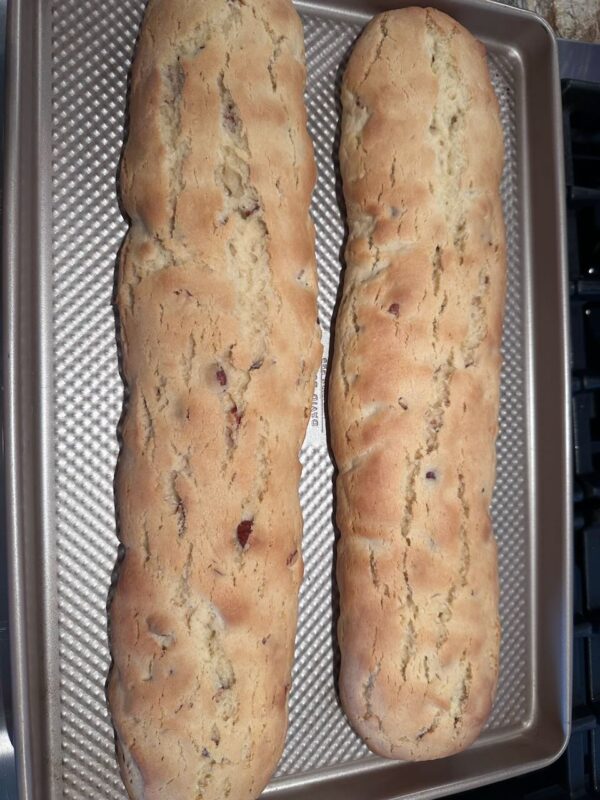
- Allow the biscotti to rest and cool for 30 minutes.
- Slice the biscotti into 3/4" slices and place the slices on baking sheets with space between the pieces so air can circulate.
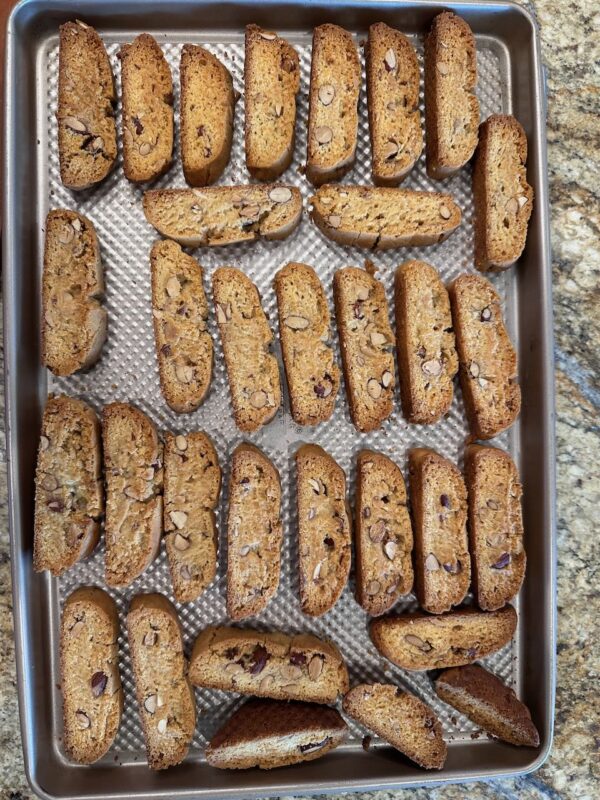
- Bake the biscotti a second time at 300 for about 20 minutes. The cookies ought to be somewhat crunchy after the second bake. As these biscotti have butter in them – they will still remain somewhat chewy so it's a balance between baked twice and still somewhat crunchy and somewhat chewy. You can bake longer if you prefer them even crunchier. Note you can store them on the counter for about a week.
